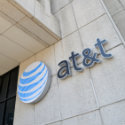
AT&T's CEO said that the operator expects to be able to offer a "true, high-speed Internet network throughout the United States" in the next three to five years via a combination of fiber and 5G.
"In three to five years out, there will be a cross-over point. We go through this all the time in industry," AT&T's Randall Stephenson said in comments today at an investor relations event. "5G will cross over, performance wise, with what you're seeing in home broadband. We're seeing it in business now over our millimeter-wave spectrum. And there will be a place -- it may be in five years, I think it could be as early as three -- where 5G begins to actually have a cross-over point in terms of performance with fiber. 5G can become the deployment mechanism for a lot of the broadband that we're trying to hit today with fiber."
Continued Stephenson: "So all things considered, over the next three to five years, [there will be a] continued push on fiber, 5G begins to scale in millimeter-wave, and my expectation is that we have a nationwide, true, high-speed Internet network throughout the United States, 5G or fiber."
Stephenson's comments essentially represent an expansion of what he said in January during AT&T's earnings call with investors. At that time, Stephenson said 5G will serve as "a true replacement opportunity" for fixed broadband services in three to five years.
However, it's unclear exactly what AT&T might actually do with the kind of nationwide broadband network Stephenson is promising. Will AT&T use that network to offer in-home Internet services in a direct challenge to the likes of Comcast and Charter, as Verizon is working to do with its 5G Home service? Or will the company simply use the network to offer select services to businesses? More importantly, would AT&T price such services in a competitive way, or will the economics of the technology give existing, wired suppliers a financial advantage?
There's no clear consensus now among analysts and industry observers on how such questions will play out.
Moreover, it's worth pointing out that Stephenson's definition of "nationwide" might not align with most Americans' idea of a service that's available across the country. After all, AT&T is promising to offer "nationwide" mobile 5G later next year, but that will only be accessible to 200 million Americans living in the largest cities -- the remaining 127 million Americans who live in rural or remote areas are not counted in that "nationwide" tally.
Such misleading ambiguity may also apply to Stephenson's promise of a "true, high-speed Internet network" across the country, considering the difficulties AT&T and Verizon face in deploying mobile 5G in millimeter-wave spectrum. Hundreds of thousands of 5G basestations will be necessary to cover major metro areas like Los Angeles due to the propagation characteristics of wireless transmissions in millimeter-wave spectrum bands. After all, Verizon's current 5G deployments generally cover only a handful of city blocks, and the operator has said that millimeter wave is not a "coverage spectrum" for 5G.
Nonetheless, Stephenson offered details about AT&T's network-buildout plans during the next few years. Most importantly, he reiterated that the operator expects to tighten its pursestrings in the coming years as many of its expensive network-improvement projects come to a close.
"I'm actually quite optimistic that over the next couple of years capital spending actually works its way down," Stephenson said. For example, he said that AT&T's LTE wireless network buildout in Mexico was mostly finished in December. And he said that the operator is closing in on its goal of virtualizing 75% of its network functions by 2020, which he said would reduce AT&T's overall network spending on hardware and other equipment.
As for AT&T's efforts to upgrade its wireless network, Stephenson said the company is conducting a "one touch" project that involves tower climbers installing several elements at one time, including support for 5G alongside adding antennas for AT&T's AWS-3 and WCS spectrum and its FirstNet 700MHz spectrum for public safety users.
Stephenson said AT&T will finish its government-mandated fiber buildout in June. As part of AT&T's purchase of DirecTV, the company agreed to build fiber to 14 million locations in the US, and Stephenson said that effort will wrap up this summer. However, he said that AT&T will likely continue to add fiber to its network in select locations beyond that target. "We'll be deploying fiber until the day I retire," he said. "5G requires extensive fiber deployment."
Interestingly, Stephenson said that AT&T expects to gain additional broadband customers throughout the coming years on its fiber network. He said the company commands around 25% market share in locations where it has deployed fiber, and he said that number ought to grow to around 50% in the coming years. "When we put people on fiber, they do not churn," he said.
Finally, Stephenson was questioned about the ultimate potential of 5G technology. He said that although the technology can support faster speeds, its real potential is in creating new business opportunities in the enterprise and IoT sectors. Specifically, he said that low latency and edge computing can support new use cases in the manufacturing and automotive industries, while the ability of 5G to support millions of connected devices also opens up new opportunities. "This changes how you think about utility management, pipeline management, traffic management. It produces all kinds of new business opportunities into our world, more than just speed. So the business side is where we're spending most of our time," he said.
Added Stephenson: "We're going to be surprised about all the use cases that come from this."
— Mike Dano, Editorial Director, 5G & Mobile Strategies, Light Reading | @mikeddano
About the Author(s)
You May Also Like




_International_Software_Products.jpeg?width=300&auto=webp&quality=80&disable=upscale)







